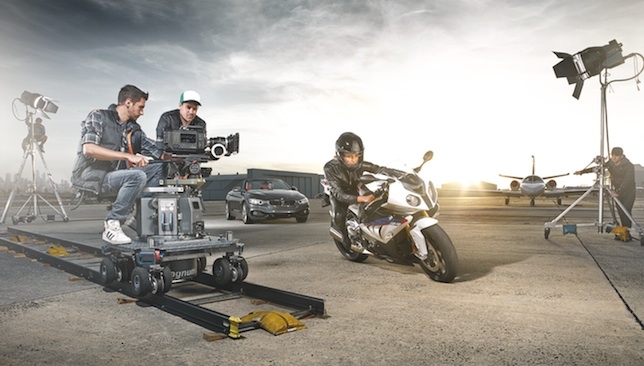
Ursa major or Ursa minor? Phil Rhodes takes an in-depth look at Blackmagic’s latest camera.
Sometimes, I really like Blackmagic’s straightforward approach to design problems. Some cameras — traditionally broadcast types intended for single-operator work – have the principal controls on the left. Some cameras, mainly those built for more generously-crewed single-camera situations, have the controls on the right. Blackmagic’s new Ursa camera has a display on both sides, on either of which the UI may be displayed.
Well, I guess that answers that question.
Even overlooking the giant ten-inch display (that everyone’s either decrying or applauding), it couldn’t more obviously be a Blackmagic product. The big, bold audio meter bargraphs and the dark casing with flashes of burnt umber are characteristic, but there’s a certain straightforward boldness to the industrial design that both identifies the manufacturer and works, if the Cinema Camera experience is anything to go by, quite well. The size of the thing is quite arresting, although I’d be the first to accept that a larger, quieter camera, thanks to more generously-proportioned heatsinks and therefore slower fans, is generally the right way to go.
The only obvious oversight in the physical profile of the thing is that there is no traditional eyepiece viewfinder. Some people don’t like the ten-inch fold-out TFT. I think it’s fine, but I’d want a more traditional viewfinder too for brighter conditions, and that’s an add-on at this point. This is doubly true for the B4-mount variation with a smaller sensor which is due later in the year, and which is very clearly intended for documentary and off-the-shoulder use where the pop out display will be less suitable. One wonders if BMD themselves might consider doing a viewfinder; I’ve heard several people ask them about other monitoring options in the past.
In fact, here’s an idea: perhaps they could release a monitor based on the 10” display and scopes from the Ursa camera, as opposed to cutting a SmartScope Duo in half. But I digress.
The company describes Ursa as upgradeable, and while that’s difficult to substantiate while there aren’t actually any upgrades available for it, the sensor and lens mount is apparently replaceable. Whether that means replaceable lens mounts with a given sensor as a package, or whether the mount can be swapped out independently, remains to be seen, although the latter option would inevitably require a careful resetting of the flange focus distance. Welcome, nonetheless.
There is a school of thought that the company’s concept of separate working areas for the director of photography, assistant, and audio crew is perhaps slightly misapplied. The recorders (dual slots taking non-proprietary CFast cards, happily) are in what BMD calls the “DoP area”, and there may be a bit of confusion over the distinction between a camera operator and director of photography, which would often be separate roles on the sort of shows that Blackmagic seem to have had in mind when developing this concept. But in the main, the replicated displays on left and right should make things quite usable and there isn’t any sign of real trouble here.
As ever, so soon after the announcement, there are not nearly enough pictures available to make any sort of judgment about imaging performance, but we’ll certainly do so as soon as possible. Oh, and it’s global shutter, which, as you may recall, we recently discussed on Red Shark as being a great hope for the future.